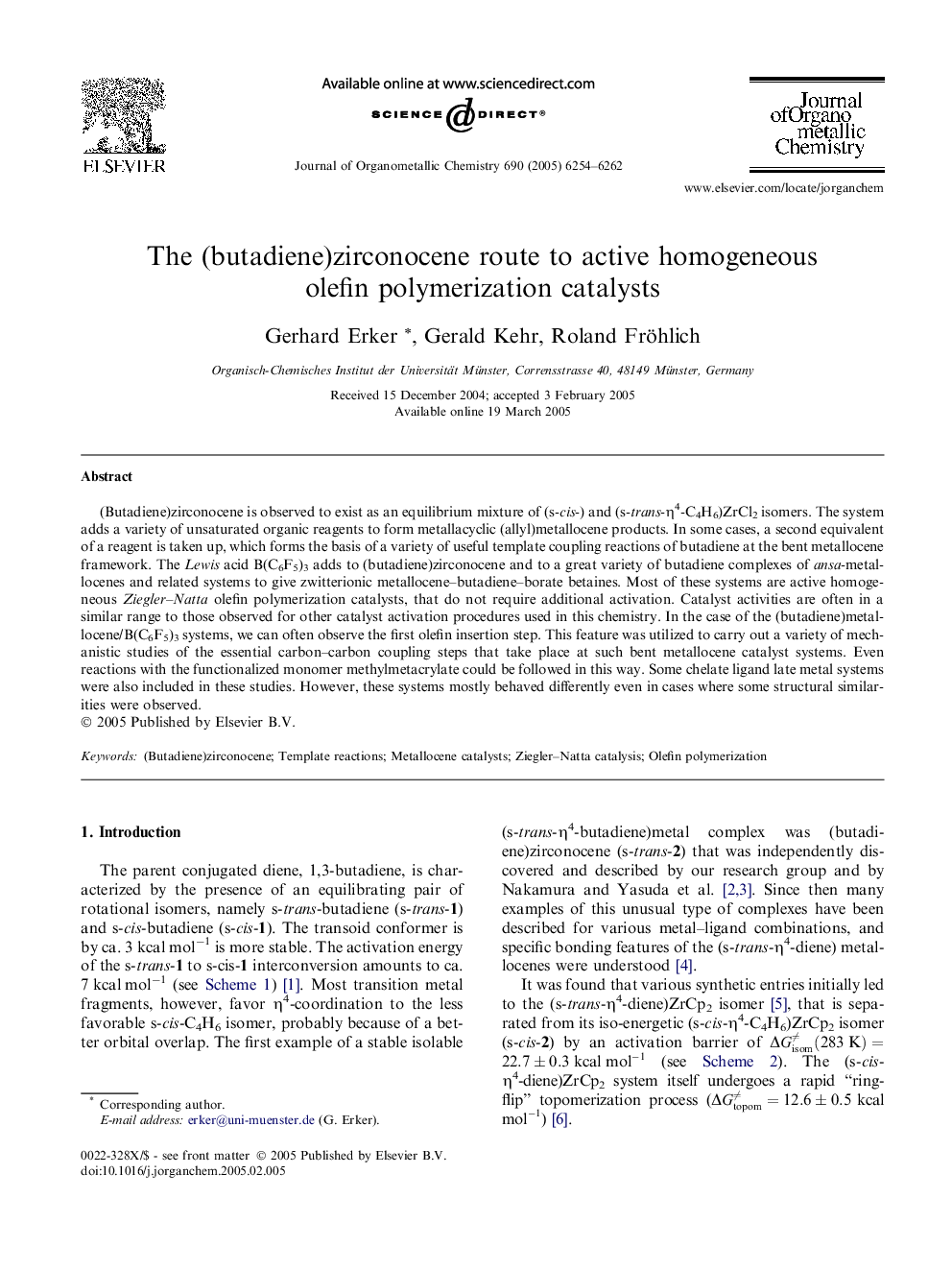| Article ID | Journal | Published Year | Pages | File Type |
|---|---|---|---|---|
| 1328620 | Journal of Organometallic Chemistry | 2005 | 9 Pages |
(Butadiene)zirconocene is observed to exist as an equilibrium mixture of (s-cis-) and (s-trans-η4-C4H6)ZrCl2 isomers. The system adds a variety of unsaturated organic reagents to form metallacyclic (allyl)metallocene products. In some cases, a second equivalent of a reagent is taken up, which forms the basis of a variety of useful template coupling reactions of butadiene at the bent metallocene framework. The Lewis acid B(C6F5)3 adds to (butadiene)zirconocene and to a great variety of butadiene complexes of ansa-metallocenes and related systems to give zwitterionic metallocene–butadiene–borate betaines. Most of these systems are active homogeneous Ziegler–Natta olefin polymerization catalysts, that do not require additional activation. Catalyst activities are often in a similar range to those observed for other catalyst activation procedures used in this chemistry. In the case of the (butadiene)metallocene/B(C6F5)3 systems we can often observe the first olefin insertion step. This feature was utilized to carry out a variety of mechanistic studies of the essential carbon–carbon coupling steps that take place at such bent metallocene catalyst systems. Even reactions with the functionalized monomer methylmetacrylate could be followed in this way. Some chelate ligand late metal systems were also included in these studies. However, these systems mostly behaved differently, even in cases where some structural similarities were observed.
Graphical abstract(Butadiene)zirconocene and related compounds add a variety of electrophiles to the terminal diene carbon atom. The addition of B(C6F5)3 yield zwitterionic metallocene/boron systems that have served as homogeneous olefin polymerization catalysts without the need of further activation. These betaine systems were useful for mechanistic investigations.Figure optionsDownload full-size imageDownload as PowerPoint slide
